Rome is the largest city in Italy and, with its vast surface area, offers 1,285 square kilometres of opportunities and possibilities for every type of visitor: from historical-cultural itineraries or food and wine through religious tourism to the seaside, mountain, lake, nature or thermal baths. If you travel to Rome with kids, you have more needs than others. Undoubtedly, it will be necessary to entertain them without tiring them, but above all, they have fun without making them bored. The capital is full of things to do and see with kids and it does not disappoint even from this point of view between parks and green areas, theme or adventure parks and many attractions enchanting children.

Things to do and see in Rome with kids
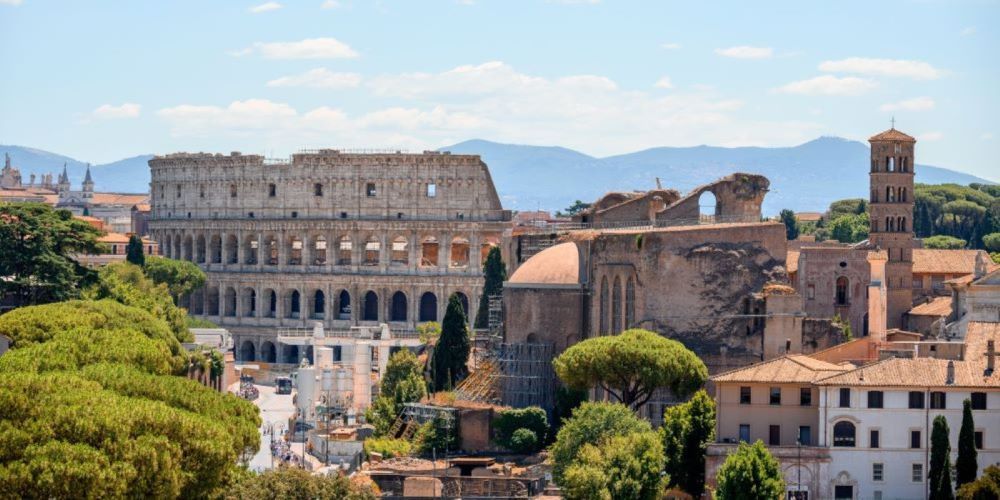
Every corner of the Caput Mundi hides secrets, curiosities, and peculiarities to be discovered: a continuous and never-ending discovery, many of them perfect to visit during a family trip. However, here we will propose our selection of things to do and see in Rome with kids, almost all close to the historic centre and with the Visit Rome Pass, the best tourist pass for the city, you can visit these attractions while enjoying a range of comforts and benefits, allowing you to make the most of the beautiful sights in Rome. From the Mouth of the Truth to the cannon’s strike, from the biggest dome of the past to a museum dedicated to firemen, let’s find out together our selection of remarkable experiences to do in Rome with kids. Want to start?
Discover Rome with Visit Rome Pass7. Sharpen your eyes with the Twin Churches of Piazza del Popolo The Twin Churches
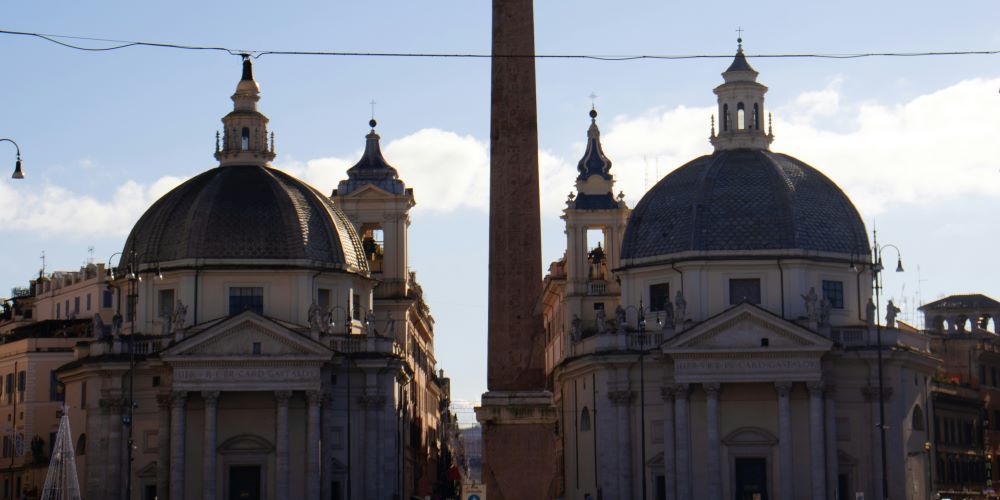
Suppose you want to put your children's skills to the test. In that case, all you have to do is go to Piazza del Popolo and challenge yourself to see who finds more differences between Santa Maria in Montesanto and Santa Maria dei Miracoli. The two churches are called twins because of an optical effect that makes them seem indistinguishable. They were built at the behest of Pope Alexander VII, one in 1675 and the other in 1678.
Both dedicated to the Madonna, the buildings represented a sort of protection by the Virgin for pilgrims entering through the Porta Flaminia. Initially designed by Carlo Rainaldi and completed by Bernini assisted by Carlo Fontana, they are the most authentic expression of the Baroque style.
Therefore, why are they called twins if they are not? The answer is simply a practical problem. Originally planned to be symmetrical, the architect Rainaldi found himself with a smaller space on the left side of the square than on the right. The problem was solved by creating an octagonal dome for Santa Maria dei Miracoli and a dodecagonal one for Santa Maria in Montesanto. Moreover, for the same reason, the church on the left has an elliptical plan and the one on the right a circular one.
However, at first glance, when viewed from the centre of the square, the two structures appear perfectly identical. In recent times, another difference has been added. If you can't see it, we can suggest the discolouration between the respective roofs. Following a recent restoration, Santa Maria dei Miracoli tiles tend to be a sugar paper grey-blue colour, while those of Santa Maria in Montesanto are of the original creamy yellow shade. If we hadn't anticipated this, would you have been able to discover all the differences?
Visit the most beautiful squares in Rome6. Find out if you are sincere with the Mouth of Truth
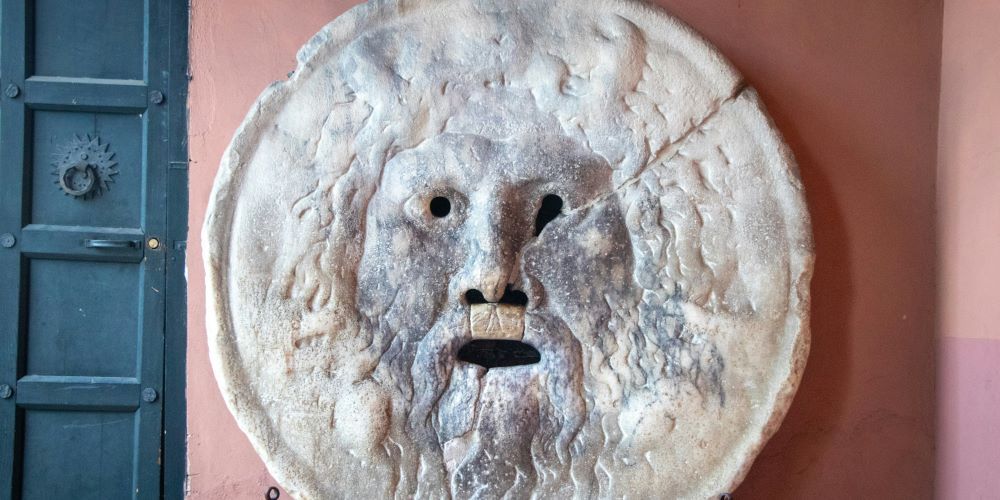
In the Rione Ripa, a few steps away from the Circus Maximus, the Mouth of Truth is a remarkable monument, one of the most attractive things to see in Rome with kids. It goes almost unnoticed from the street. The many people queuing and waiting are a sign that there is something interesting nearby.
A manhole! Yes, the ornamental marble element is nothing more than the top of a manhole cover, as was often the case in ancient Rome. Since about 1630, it has been walled into a wall of the pronaos of the Church of Santa Maria in Cosmedin.
A bearded male face and hollow eyes, nose, and mouth probably represent a river deity, or perhaps Jupiter Ammon, swallowing water. Interpreted by others as an oracle, a faun or the god Oceanus, this decoration arouses a sense of magic and mystery. Whoever it is, legend has it that the hand of the liar will be stuck inexorably in the merciless marble mouth.
Do you remember the scene from the famous film Roman Holiday? Well, don't scare the kids as Gregory Peck did with Audrey Hepburn by pretending that her hand was stuck in the jaws of the famous marble mask.
The actress was terrified during the filming, and the scene was very realistic. So make sure it's a fun, non-traumatic experience.
5. Marvel at the magic of Via Piccolomini
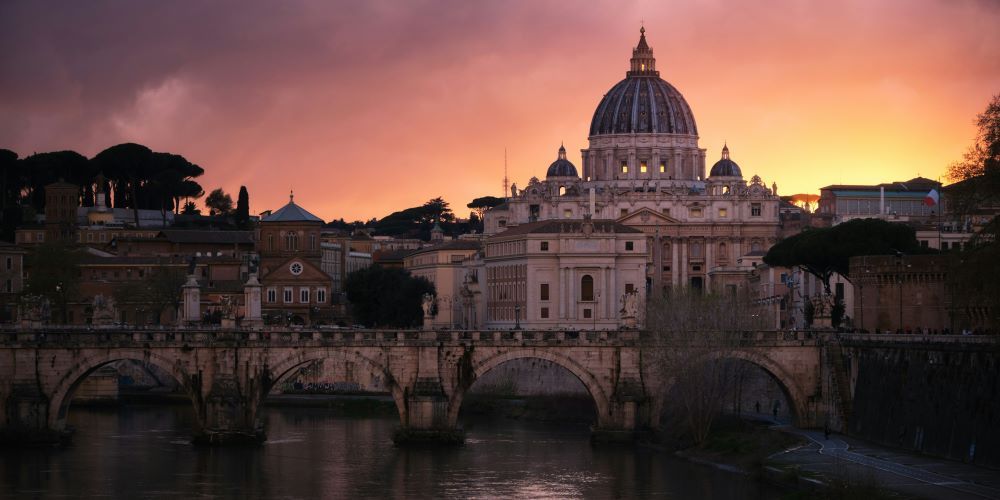
Via Piccolomini, characteristic little street in the Aurelio district (between Via Aurelia Antica and Via Gregorio VII), a balcony is overlooking St Peter's Dome. For the locals, it is a meeting place for celebrating their 18th birthday or graduation with a toast.
The colours and lights of the sunset make the romantic panorama the ideal place for a marriage proposal. You'll be amazed by the extraordinary visual impact and unique optical effect. The Dome looks even more imposing and majestic from this city corner.
If you walk, drive or ride along the street, you'll experience real magic. The closer you get to the dome, the smaller it becomes. On the contrary, as you move away, it seems to grow larger and almost chase you as you move. It is a mysterious trick that will undoubtedly arouse curiosity and amaze the children, not only them...
However, what is the reason for this mystery? None of the previous things: a "very simple" play of perspectives deceives our eyes. In the first part of the street, about 50 metres, our gaze is drawn entirely to the dome. Like a real protagonist, it is set by the buildings to the right and left.
As we continue along the street, our gaze tends to have a different perception of the space, which, due to an optical illusion, "shrinks" the monument of Christianity par excellence.
Visit Rome by bike4. Watch the firing of the Gianicolo’s Cannon
A true dip into history in the charming Trastevere district, the cannon of the Janiculum is something fascinating to do in Rome with kids that you will hardly find anywhere else. The hill, which was the scene of the Risorgimento and the process that led to the Unification of Italy, still bears witness to an ancient ritual that is repeated daily.
Every day, at noon, the cannon strikes the time for the people in Rome and continues to amaze the curious and fascinated tourists. A blank shot synchronises the bells of all the churches in Rome, which ring in unison and a coordinated manner at the exact time at noon.
This tradition originated on 1 December 1847 at the behest of Pius IX, and it was only interrupted during the Second World War. However, since 21 April 1959, the custom is still ongoing.
It would seem that the cannon, moved here in 1904, was initially located in Castel Sant'Angelo and later on the slopes of Monte Mario. Once you reach the Janiculum, in addition to the spectacular walk and the terrace with a breathtaking view of the capital, you can admire the busts of numerous historical figures and the statues of Garibaldi and Anita on horseback.
A journey back in time to retrace the footsteps of those who fought for the birth of Italy, a unique emotion for you and your children. Last but not least, if you are here on Saturdays and/or Sundays, between 10.30 and 13.00, don't miss the traditional Janiculum Puppet Theatre with shows designed especially for families.
Discover the most beautiful attractions of Rome3. Look at the sky from the Oculus of the Pantheon
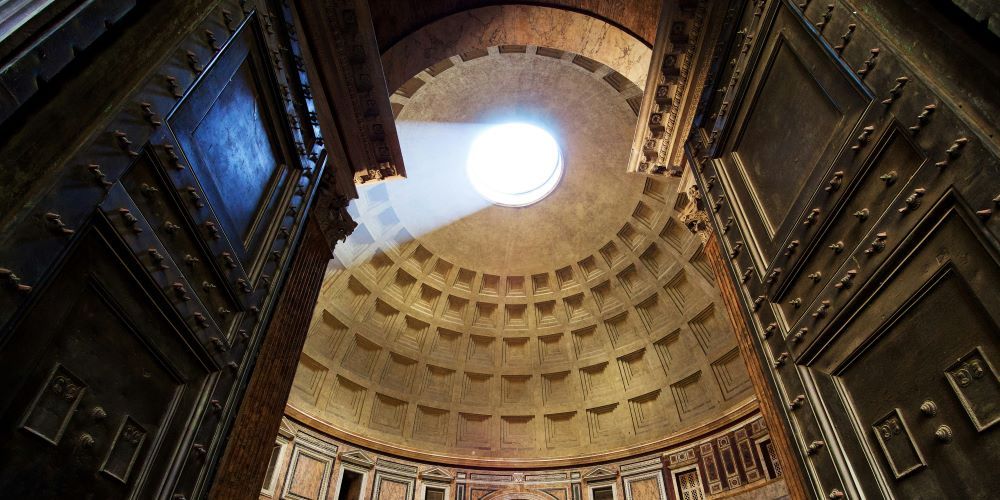
If you want to see a slice of the sky from a unique perspective, the Pantheon is the right place to visit in Rome with kids. The impressive structure dates back to 27 B.C., when Marcus Vipsanius Agrippa (son-in-law and collaborator of Augustus) started its construction.
Despite several theories circulating about its reconstruction, one is historically valid and accepted. It was carried out following a fire due to lightning that destroyed the building in 110. It is said that it was restored by Hadrian.
In contrast, according to others, it was restored several times by Apollodorus at the behest of Trajan, then demolished and rebuilt by Hadrian.
The Roman temple, from the Greek term pántheon "of all gods", is dedicated to them. Because of the shape of the central structure, the Pantheon is also known as the "rotonda", an appellation that gives its name to the square itself.
The dome is the undisputed protagonist, with its 43,44 internal diameter, it’s the largest ever made of unarmored concrete. It is the testimony of the genius of Roman architecture: the building, over the centuries, is still practically intact. Internally it consists of 28 coffers, called lacunaria, arranged on five horizontal orders.
The only source of natural lighting is the dome's centre, named the Oculus, a circular opening of 9 m in diameter. In addition to allowing the expansion of the interior space, this particular beam of light allowed to carry out astronomy studies and observe certain phenomena depending on the time of year.
With no bit of wonder, you will discover that the Pantheon, like many ancient monuments, was not geographically oriented but also astronomically based on the cardinal points where the sun rises or sets, the solstices and the equinoxes. It is a unique example for its excellent state of conservation, its majestic proportions, and its impressive dome.
Visit the Pantheon with us2. Discover a giant foot in Via del Pie' di Marmo
A few steps from the Pantheon, you will come across something really unusual and that, surely, will capture the attention of young and old. A huge marble foot placed on a pedestal will give life to the most imaginative stories. It is located right at Via del Pie' di Marmo giving its name to this characteristic street of Rione Pigna.
Apparently Egyptian-looking, this fragment is what remains of a colossal statue from a temple dedicated to the Egyptian deities Isis and Serapis (this of Campus Martius, has always been considered the main Isiac place of worship in Rome, as well as the most magnificent). It is difficult to determine what the sculpture represented, if it was a rather feminine male figure.
With a length of 123 cm, it is most likely assumed to a statue over 8 meters high. Given its size, it is almost logical to believe that it was a statue of worship.
It was a deity, or a priest or priestess? Was the character standing or sitting? According to some scholars, it was probably the goddess Isis. The foot is sculpted from a single marble block including the base.
The state of conservation is not the best, on the contrary, the foot is very deteriorated due to the passage of time, due to the historical vicissitudes that, obviously for prolonged exposure to the weather. However, it will be fun to invent stories with children to unleash their creativity between history, legend and imagination.
Discover Rome on foot1. Things to do in Rome with family: explore the Fire Brigade Historical Museum
Almost all children dream of being a fireman and taming a fire. What better place than the Historical Fire Brigade Museum? A stone’s throw from the Cestian Pyramid, the museum allows you to get to know the Fire Brigade, and it is one of the best things to see in Rome with kids. Located in the back of the fire station De Jacobis in the District Testaccio, it can be visited only by appointment (except Sundays and public holidays).
You will experience an exciting journey and understand what firefighters do every day engaged in the protection of people. For 20 years, exactly since April 18, 2002, through themed and scenographic representations, we have retraced the evolution of how rescue was organized, since the time of the Ancient Romans, when they were called Militia Vigilum.
During the visit, you will "meet" characters, popes, emperors and you will dive into evocative scenic reconstructions reproducing the most tragic events that have affected the city of Rome: the fire of Nero in 64 AD, that of 847 which risked destroying the Basilica of San Pietro and the bombing of 19 July 1943.
An interesting section is dedicated to fire systems, with exhibition spaces assigned to different specializations (divers, helicopterists, speleo-alpine-river rescue). In addition, a multimedia room projects films to educate in the prevention of fires. This is a fascinating path from which you will surely come out enthusiastic and with some extra information.
About the author
Written on 23/03/2022

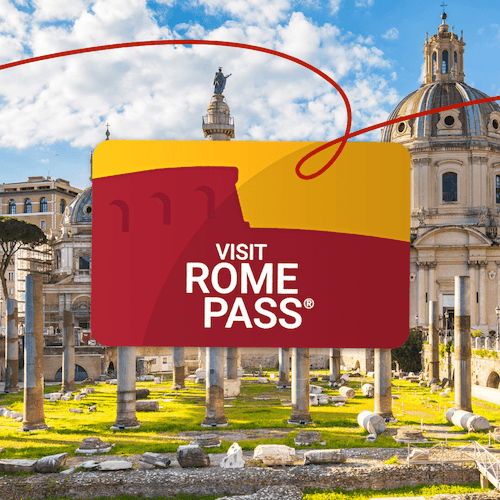
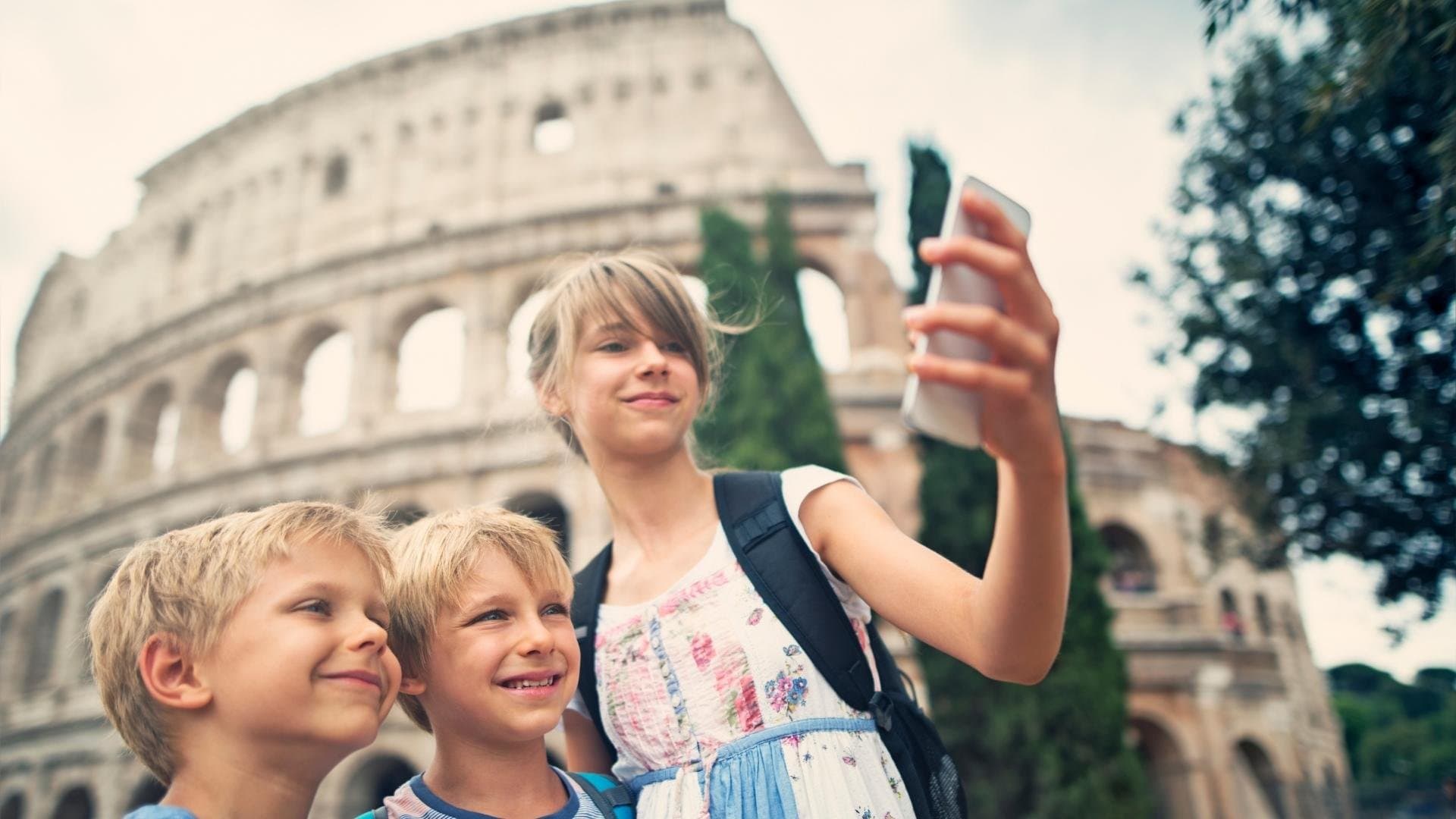

Alessandra Festa
What to do in Rome with kids? Here you will find 7 ideas to make their trip unforgettable.